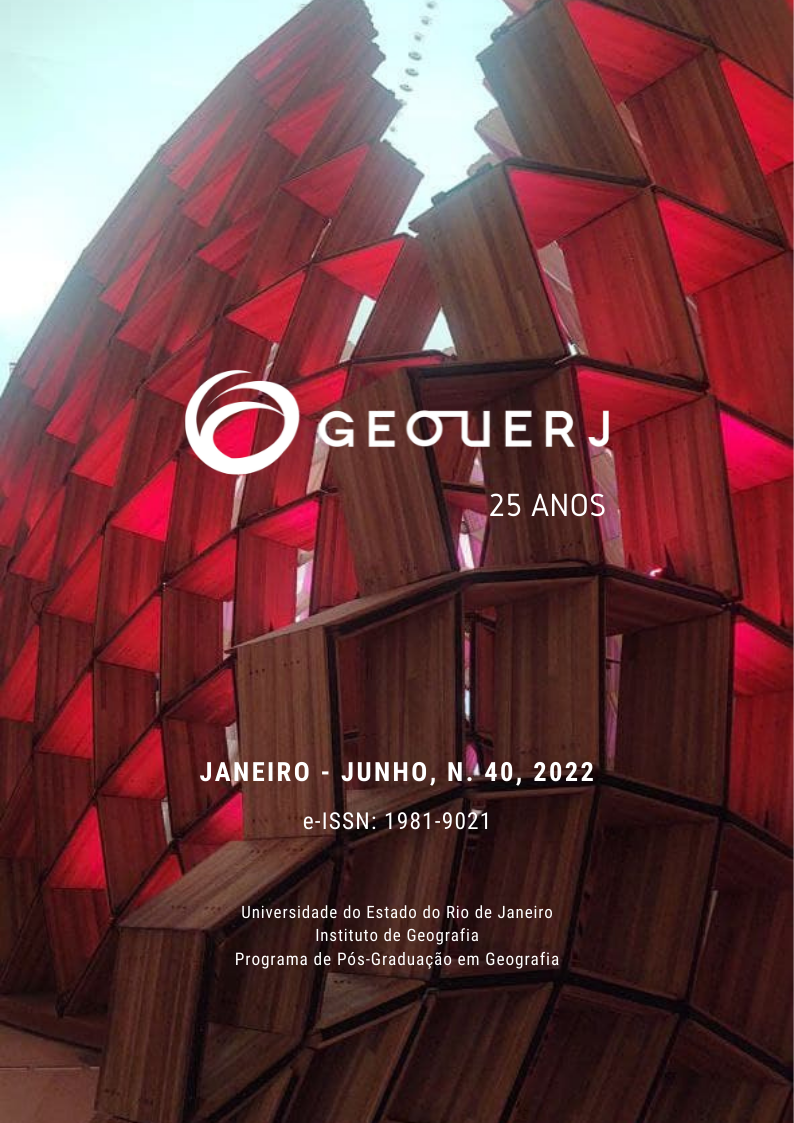THE USES OF PUBLIC SPACES: THE SQUARE AND ITS DYNAMICS IN THE CURRENT CITY
DOI:
https://doi.org/10.12957/geouerj.2022.51763Keywords:
Public Spaces, City, Square, Culture, Montes ClarosAbstract
Introduction: Public spaces can well be disclosed as an important role both for the quality of cities and for the well-being of people. There are many benefits that these spaces can bring, such as social, economic and environmental. Although they have evolved in form and function throughout history, public spaces have always been subject to analysis, as they are provided for the inclusion of anyone, regardless of age, social aspects, physical relationships or physical conditions. One of the biggest concerns of today's societies is to guarantee citizens what is rightfully theirs: the city. Several cities already have a new view on this issue. Breaking the logic of modern practical planning, they seek to create spaces of greater quality both for their users and for the appearance of cities, through urban design and appropriation objectives. This is a reality that shows an attempt to return to policies involving the scale of man and his experiences in the city. Furthermore, public spaces are first and simply defined as meeting places between the various groups that make up the urban scene. Urban spaces are also built over time. In this way, the current city is the cumulative result over time of the other cities that existed. These spaces, especially as squares, present a mix of uses and appropriations; for the spaces, they are spaces for meetings, leisure, political and cultural manifestations, including religious manifestations. Objective: In this context, we seek to understand the uses and appropriations of the square, as a public space in the dynamics of the city of Montes Claros (MG), and cultural manifestations, especially with regard to the Catholic Church present in the city in question. Methods: Qualitative research is used as documentary techniques, from data consultation in public agencies and scientific bibliographic materials through analysis of the characterization of studies, academic and scientific articles, and field visits were made optimized which enabled the theory-empirical relationship and iconographic records of the squares under study in the thematic database. Results: The main forms of uses of public spaces are listed in the article, these being the squares and their dynamics in the contemporary city, this city, Montes Claros in the North of the State of Minas Gerais, analyzing the squares, a brief history, their uses, the churches present in these spaces, their influences and different forms of their uses. Conclusion: In final considerations, public spaces: squares (discussed in this work) are inserted in this logic of capitalist construction, as demonstrated. The squares are distinctly appropriated by the State, the market and individuals, for them it is a space for meetings, dialogues and rites, thus presenting their different and distinct forms of use by the most varied agents that produce the urban public space of the city on screen.Downloads
Download data is not yet available.
Downloads
Published
2022-07-19
How to Cite
Batista, R. P., & Bortolo, C. A. (2022). THE USES OF PUBLIC SPACES: THE SQUARE AND ITS DYNAMICS IN THE CURRENT CITY. Geo UERJ, (40), e51763. https://doi.org/10.12957/geouerj.2022.51763
Issue
Section
Articles
License
The copyright of articles published in Geo UERJ belongs to their respective authors with rights to first publication conceded to the journal. Every time that the article is cited and reproduced in institutional repositories or personal and professional web pages the link to the journal web page must be provided Geo UERJ.

The articles are simultaneously licensed under theCreative Commons Atribuição-Não Comercial-Compartilha Igual 4.0 Internacional.


